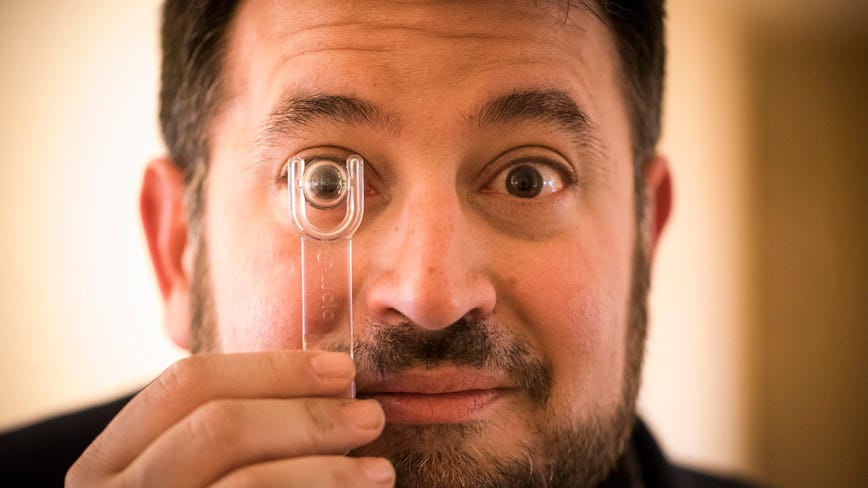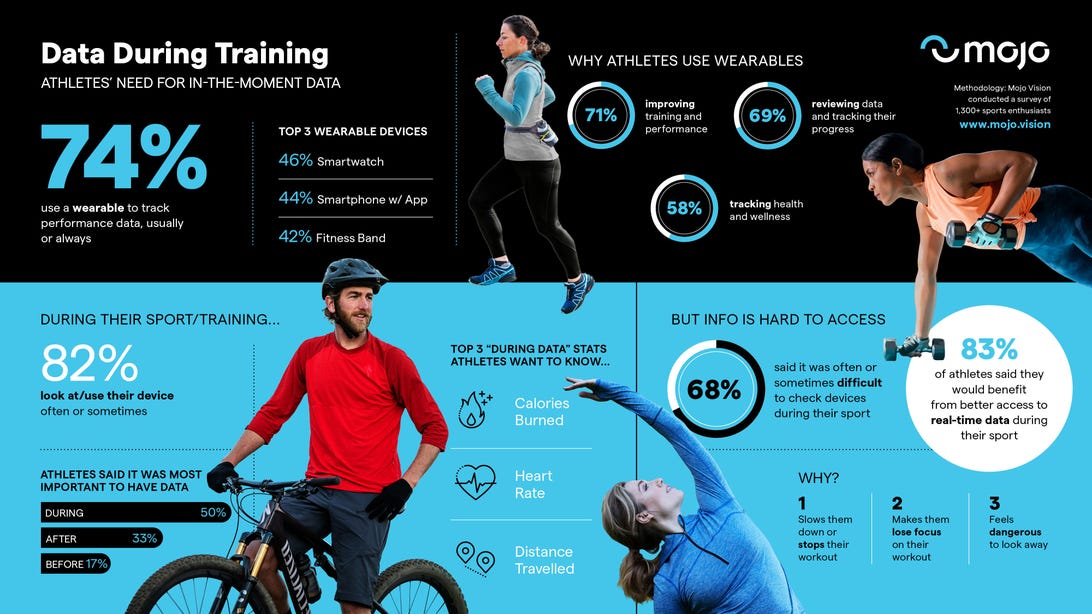Ditch the smart glasses. Mojo Vision’s smart contact lenses want to track your fitness

My last time looking at Mojo Vision, January 2020. The lenses are gearing up for the fitness training market next.
James Martin/CNET
This story is part of CES, where CNET covers the latest news on the most incredible tech coming soon.
It’s been two years since I held a tiny contact lens with a display in it up to my eye. Mojo Vision’s tech, which is still aiming toward a self-contained and Food and Drug Administration-approved testable prototype, promises a HUD you could wear without glasses, equipped with its own motion sensors and processor. While the company’s original focus for the contact lens was on helping the visually impaired, which remains Mojo Vision’s longterm goal, the company’s newest partnership with several fitness and sports companies explores how and if the lenses could work as eye-worn fitness readouts, too.
Mojo Vision is working with companies that cover running (Adidas), hiking and cycling (Trailforks), yoga (Wearable X), snow sports (Slopes) and golf (18Birdies). According to Steve Sinclair, Mojo Vision’s senior VP of product and marketing, the partnerships are about trying to determine what the best interfaces would be, and whether markets in fitness and sports training would be a good fit.
Mojo Vision’s announcement leans on survey results the company collected from over 1,300 sports enthusiasts, indicating that athletes tend to use wearables for data collection (not surprising) and would benefit from better data access. The survey notes that 50% wanted real-time data (again, not surprising based on the current fitness tracker market). The partnership is more geared toward exploring possibilities, rather than having any sort of definitive solution in mind.?
 Mojo Vision
Mojo Vision
There are already a number of heads-up displays for sports use, including ski and swim goggles. What’s unclear is if wearable contact lenses with displays in them would be helpful as opposed to distracting. It’s also unclear whether Mojo Vision’s eye movement-based control of the lenses’ interface would be used, or if display readouts for things like heart rate would remain static. Or, would you just prefer to look at your watch? In a discussion over video chat, Sinclair suggested that a lot of the possibilities would be focused on training, not during live events.?
Eventually, the idea of wearable displays and glasses working as connected readouts with fitness watches seems inevitable. Whether or not contact lenses end up feeling safer to use than glancing at a watch depends on how easy Mojo Vision’s lenses will be to wear and read. We don’t know the answers to that yet, but the overlaps between smart glasses and fitness trackers are likely only getting started.